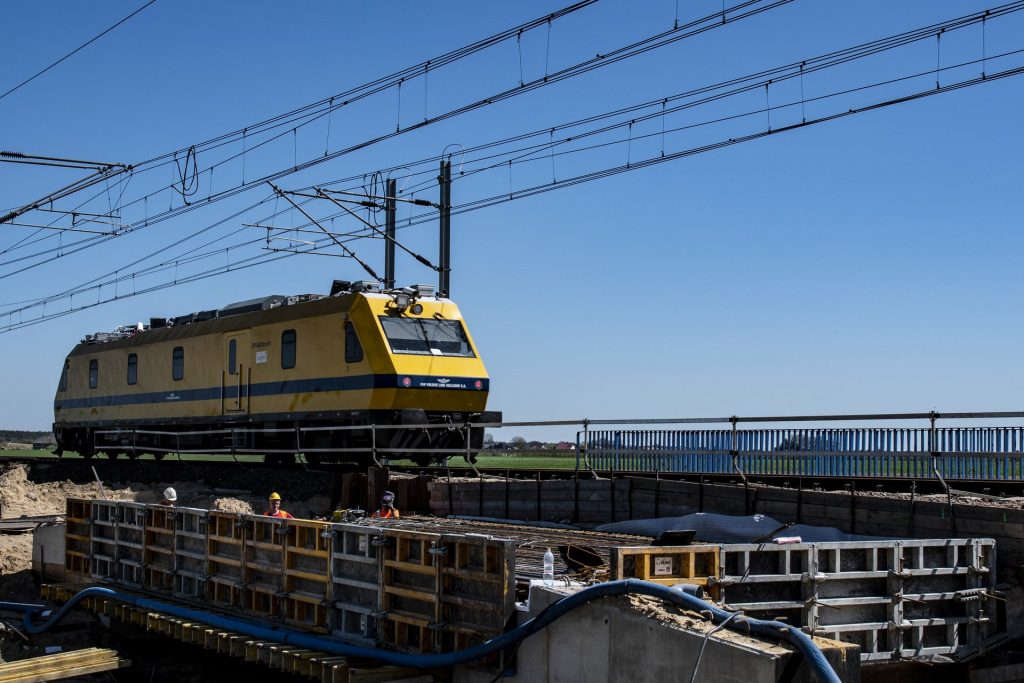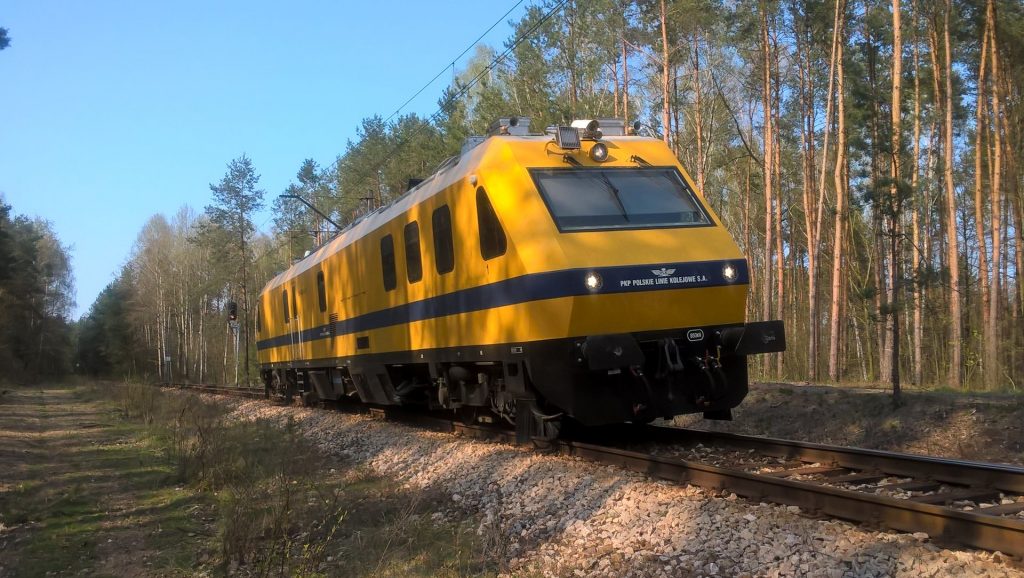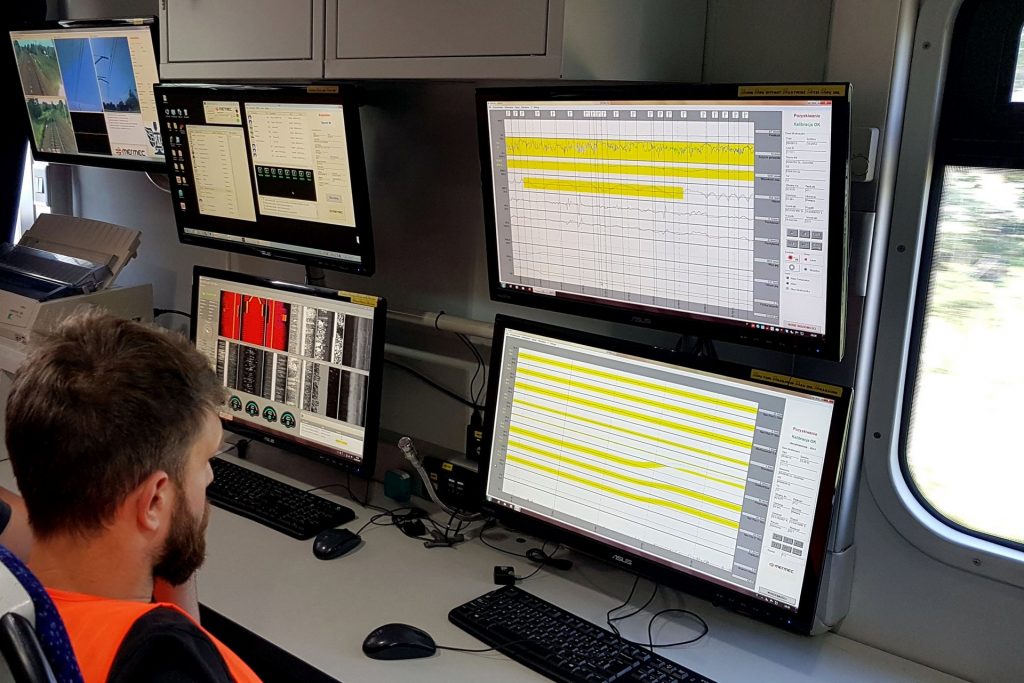For the safety of rail transport and to maintain established infrastructure parameters, PKP Polskie Linie Kolejowe S.A. constantly monitors the condition of its tracks. In 2021, diagnostic vehicles inspected 49,300 km of track – a route longer than the equator. Measurements of the track and overhead catenary at speeds of up to 120 km/h are carried out by a modern diagnostic vehicle equipped with lasers and cameras as well as 3 modernised measurement vehicles.
In 2021, the measuring vehicles owned by PKP PLK S.A. inspected tracks over a length of 49,300 km. The condition of track geometry, rails and sleepers, as well as the catenary network and train braking system devices were checked. Measuring vehicles are present on the tracks of the most important railway lines. They have checked, among others, the condition of the Central Railway Line, the Warsaw – Gdynia, Warsaw – Kunowice and Warka – Radom routes. Their crossings are scheduled without any influence on the scheduled train traffic.
– Monitoring the condition of railway lines, also with the use of modern diagnostic vehicles, makes it possible to obtain comprehensive information on the condition of individual infrastructure elements. The results of measurements carried out by the PKP PLK Diagnostics Centre make it possible to assess the condition of tracks, plan in advance necessary works in order to maintain the required safety level and plan train travels – says Piotr Majerczak, member of the Management Board of PKP Polskie Linie Kolejowe S.A.
Rails under the watchful eye of diagnosticians and machines
The state-of-the-art diagnostic vehicle, known as a mobile laboratory on the tracks, checked 24,600 km of track last year. Using non-contact measurement technologies, including lasers and sensors, the crew carried out measurements of the track geometry, rails and the catenary network. The sleepers and the so-called automatic train braking devices, which guarantee stopping the train, e.g. in case of the driver’s indisposition, were checked. During the measurement, the vehicle uses optical systems – lasers and cameras, so it does not interfere with the track-side equipment and doesn’t cause hindrances in the train traffic. Measurements can be performed at speeds of up to 120 km/h.
More than 11,600 km of rails were checked using ultrasonic testing in 2021. By x-raying the rails, the combined car defectoscope inspected their condition in order to detect possible invisible internal defects.
The dSAT measuring vehicle (rolling stock emergency detection) checked twice the condition of more than 180 sensors, which monitor the wheels of passing wagons and locomotives. During daily train operations, the trackside equipment detects defective rolling stock in terms of hot axles, which protects the rolling stock against possible fires. Constant monitoring ensures safe travels for passengers as well as safe freight transport. It also helps to prevent damage to the track.
A similar scope of work is planned for 2022.
Neighbouring infrastructure managers also benefit from the experience of PKP PLK diagnosticians. PKP PLK will once again perform geometry measurements of normal gauge tracks (1435 mm) in Lithuania.
Permanent diagnostics for efficient rail transport
The PKP Polskie Linie Kolejowe S.A. Railway Lines Diagnostics Centre monitors the condition of the track structure and the catenary network throughout the country. PKP PLK combines traditional methods of monitoring the condition of lines with modern solutions and technologies. Specialists use measuring vehicles and manual devices. The obtained data determine the technical condition of track elements, catenary network and automatic devices. They perform measurements of track geometry, defectoscopic measurements of rails, laser gauge measurements, measurements and detection of catenary wire damages.
Based on the obtained data, our experts detect defects which may affect the safety and quality of the train run, so the passengers’ comfort. Effective diagnostics allow to react in advance to the exploitation of the line and to plan maintenance and modernisation works.
Source: PKP Polskie Linie Kolejowe S.A.




